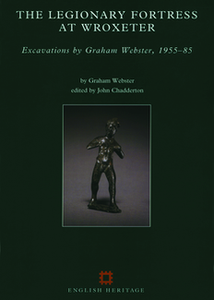English Heritage Archaeological Monographs
English Heritage, 2014. https://doi.org/10.5284/1028203. How to cite using this DOI
Data copyright © English Heritage unless otherwise stated
This work is licensed under the ADS Terms of Use and Access.
Primary contact
Historic England
The Engine House
Firefly Avenue
Swindon
SN2 2EH
Resource identifiers
- ADS Collection: 1416
- DOI:https://doi.org/10.5284/1028203
- How to cite using this DOI
The Legionary Fortress at Wroxeter: Excavations by Graham Webster, 1955-85
Chadderton, J., Webster, G.
English Heritage (2002)
Abstract:

Roman legionary fortress at Wroxeter (Viroconium Cornoviorum) was built on a strategic crossing-point on the River Severn. Though the site of the Roman town had long been known through the presence of upstanding ruins, the major excavations reported here have shown how the town plan was dominated by the underlying fortress. This fortress had been established by Legio XIV c. AD 60 and had then been partially rebuilt c. AD 66 when the legion was replaced by Legio XX. The fortress was downgraded in the late 70s to become a depot for stores before final abandonment c. AD 90. The excavations produced extensive evidence for the laying out and construction of the legionary earth and timber defences and of an area within the fortress to the north of the via praetorian where mess halls, barrack blocks and a storehouse were found, as well as considerable quantities of coins, metalwork, pottery and glass.
Download monograph
| The Legionary Fortress at Wroxeter: Excavations by Graham Webster, 1955-85, Chadderton, J.|Webster, G., English Heritage (2002), ISBN: 9781848021853 | 50 Mb |





